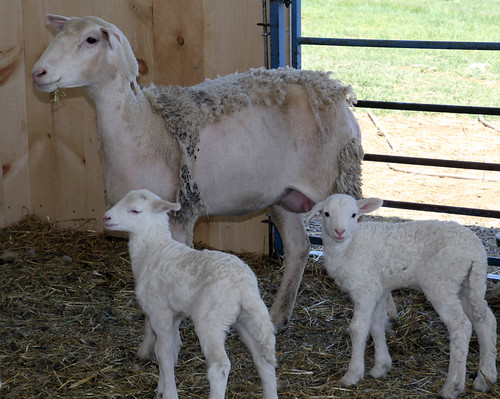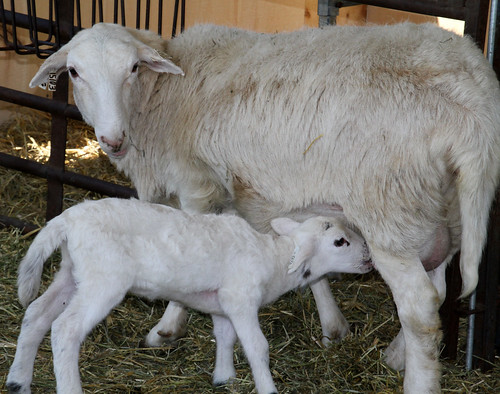 |
| One of the crossbred ewes with her twin lambs |
Half of the yearling ewes are registered Katahdin. One will need a coat inspection to get her full registration paper, as she's 12 percent Hampshire x Suffolk: a Katahdin "Mule." The other yearlings are 16 percent Lacaune (dairy). Their lambs will be 8 percent Lacaune (92% Katahdin) and can be recorded as 50 percent Katahdin with the breed association. The daughters of these lambs will produce lambs that can be 100% registered Katahdin.
Of course, the yearlings are raising their lambs in the new carport barn. They have lots of room and fresh air. Sadly, it hasn't rained much since they moved in; so, I don't know how wet they might get from a good rain. I set up a creep pen in the corner of the end that is closed. I have some concern that the grain might get wet. If this turns out to be the case, I will put up a tarp in that corner.
 |
| In the carport barn |
There are two more yearlings left to lamb. I hadn't planned on keeping them, but when I did, I put them in with the ram (Eddie). One is due May 9, as she bred as soon as she was joined with the ram. The other ewe should lamb soon thereafter. The mature ewe that didn't lamb yet doesn't seem to be bagging up. Her due date would be May 12, if she bred on the last day she was with a ram. It's doubtful. I think I'll put her in my freezer. She's fat enough. Maybe I can make bacon from her belly!
 |
| My ewe with EBVs is raising twin ewes. |
You can only be making progress in your breeding program if your yearling ewes are raising some of the best lambs. I feel that this is the case with my flock. I keep my yearling ewes as a separate production unit until after they wean their lambs. From now on, I think I'll keep them as a separate unit until they are bred for the second time. I specifically had the carport barn built to house the yearlings and their lambs.
No comments:
Post a Comment